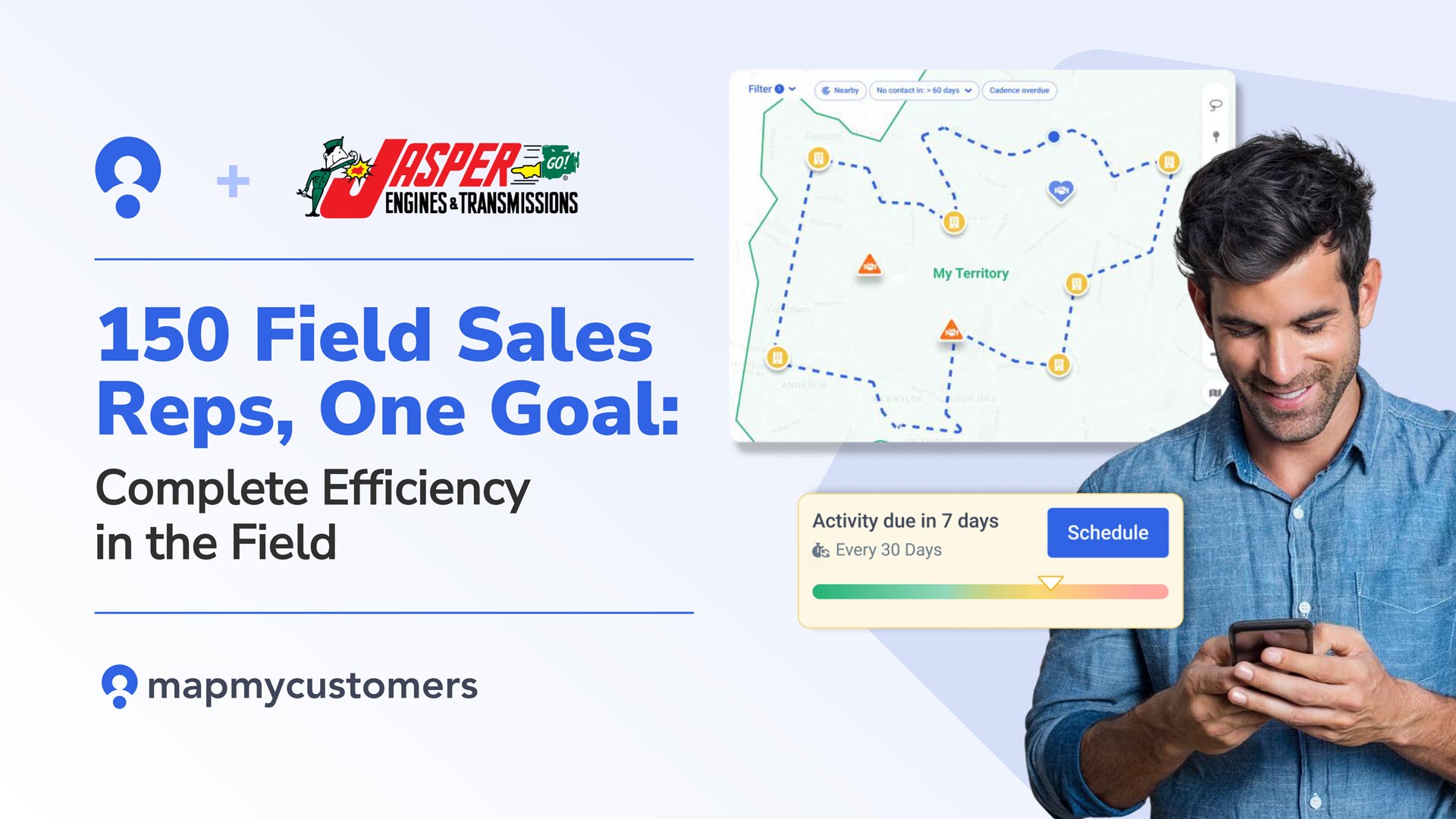Effective sales negotiation is one aspect of the job that you as a sales professional can’t afford to slip up on. Negotiation may seem like it comes naturally to some people. In reality, it comes down to having the knowledge, skills, and information that allow you to confidently and effectively negotiate your sales deals.
Confrontation is something, as humans, that makes us naturally uncomfortable. But, understanding that this is true for not only you as the seller but also for the buyer is key. This knowledge, along with the awareness of how to overcome some common negotiation mistakes, will set you up to utilize effective negotiation and close more deals.
Let’s take a look at some of the most common pitfalls in sales negotiation and how to beat them.
Source: Salesforce
Not Being Fully Prepared
Preparation to put yourself in the strongest position for sales negotiation actually involves two parts. It is, of course, crucial to know your product or service inside and out. Able to answer any questions or provide as many value propositions as possible. But, the one aspect many salespeople forget is knowing your customer just as well. Doing so will ensure that you can react proactively and customize your product’s value propositions to their particular pain points, overcome any potential objections, and have an insight into their buying processes, budgetary restrictions, etcetera.
Take the time to make sure you have all the information you can gather about your prospect. This will also allow you to have more natural and confident conversations and stop feeling so pressured. You’ll be able to make a connection with your prospect and have a real conversation. Slowing down and building a rapport with people give you the opportunity to glean valuable information that can be used to identify what they truly value in life, what they are motivated by, and what annoys them. All the ammo you need to effectively negotiate a deal that they will value.
“You might be surprised how well you can leverage what you learn through a genuine conversation with someone.”
-Eldonna Lewis-Fernandez, author of Think Like a Negotiator
Lacking A Solid Strategy
Lacking a solid strategy for how exactly you are going to drive your sales negotiation can be extremely detrimental. Once you have taken the time to gather as much knowledge about your prospect, alongside fully knowing your product or service, plan out exactly how you are going to use that information in your negotiations.
To effectively negotiate consistently this is not a time to wing it. For a negotiation to end in your favor, it’s crucial to have a clear sales strategy which takes you from a defined opening point to closure. Also, one which incorporates parameters that allow for negotiating flexibility but doesn’t allow boundaries to be crossed. This will avoid situations where you are pressed for unprofitable prices or that may be damaging for future business relations.
Source: Marketing Donut
Negotiating With The Wrong Person
There’s nothing worse than getting almost through a sales negotiation, to the point of a final buying decision, and learning that you are not speaking with the final decision maker. This goes back to the point above of being fully prepared. This can become a very sticky situation. Once you discover who the person is that can approve the final purchase decision is, you may not have as much negotiation room left in the deal as you may have had if you spoke with them to begin with. The person you thought was the decision maker may now be stuck on a price in their mind that is higher than what the actual decision maker would have gone for.
Always ensure you know who the final purchasing decision maker is and focus your efforts on that person. You may have to win over a gatekeeper in the beginning to talk to this person, but do not start negotiating prices with anyone except the final decision maker.
Talking Too Much
Talking too much is one thing that can kill a sales deal faster than many other situations. It is, unfortunately, a very common problem for a salesperson to talk so much about their product or service that they talk their prospect right out of the purchase. No one likes to feel like they’re being talked at or enduring a hard sell. As the saying goes, take the time to practice the pause in your negotiations. As a sales professional, this can prove to be an invaluable skill.
Never underestimate the power of silence. When discussing a deal, after you’ve confidently made your arguments for your product, simply stop talking and let your prospect think. Get comfortable with the awkwardness of silence and it’s proven that your ability to win the deal and sell the product in the negotiation increases significantly.
Source: Gordon Training International
Letting The Buyer Make The First Offer
You may have been told before or read somewhere that letting the buyer make the first offer is an effective strategy to get a leg up in your negotiations. This is a common myth that can do more harm than good. Research has now proven that the final negotiated price directly correlates with who established the price range in the beginning. If the buyer goes first and offers a low price range it is much more difficult to persuade them away from that range. The final price will more than likely be lower than what could have been achieved.
As the seller, you should always go first with the price. Work this concretely into your negotiation strategy that was mentioned above. This will anchor the price and provide a more favorable and profitable result. This can also help qualify or disqualify the buyer quickly.
Giving Up After Hearing No
One of the keys to successful negotiations is asking for what you want and being ok if you hear no the first time. The fear of rejection is often a roadblock for many salespeople. But, it is a very powerful thing for your sales psyche to know and accept that rejection will happen.
A rejection of your offer or sale is not personal. It simply means that at this moment your prospect believes that you did not present a strong enough argument substantiating why they should buy your product or service. As leading negotiation skills consultant and speaker Eldonna Lewis-Fernandez says, “Your offer was rejected, not you.”
When you get a no, it usually just means your prospect needs more information as to why your product or service meets their pain points, is valuable to them, and they should buy. It is true that people say no an average of three times at minimum before they say yes. So, be ok withing getting rejected and keep asking. Don’t give up after you hear your first no.
Pushing Too Far For A Sale
It is important to be ok with hearing no in the beginning. But, it is sometimes more important to be aware of the lines that should not be crossed in sales negotiation. At the negotiation stage, it’s sometimes possible to reach a point where the customer may be demanding more than you can reasonably offer or has simply changed their mind. This is a very important crossroad in sales negotiations.
As a salesperson, you should be able to recognize the point at which attempting to press on with negotiations is futile or may potentially damage an existing business relationship. At this point, it is perfectly ok to acknowledge and accept that the sale is lost.
Not Knowing When To Walk Away
You should never put yourself in a damaging situation just to make a sale. There are situations where it may be the best decision to walk away from a deal even if the prospect wants to buy. This is a crucial negotiation strategy to be aware of.
Some customers may continue to counteroffer to a point where it is no longer profitable for your company to make that sale. Or, it may prove too costly in the long run to have that prospect as a customer if they are already making demands for free “additions”, etcetera. Taking a deal on like this just so that you can say you’ve closed the deal is definitely not good for business overall.
Source: Website Properties
Wrapping It All Up
Sales negotiation can be a very intimidating part of the process as a sales professional. Even the thought of preparing for negotiation or a closing meeting can be nerve-wracking for many. But, taking the extra time to be fully prepared, being persistent when necessary, and maintaining your confidence will set you up for success. Knowing when it is time to walk away from a negotiation is also key.
Armed with the knowledge of how to beat some common negotiation pitfalls, you’ll shift your thinking to a place where you are confident and excited to go into a sales negotiation. There’s nothing stopping you as a sales professional from improving your skills and gaining new ones for greater sales success.
We want to hear from you! What other negotiation mistakes have you made in a sales negotiation, and how did you overcome these mistakes?









